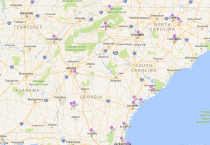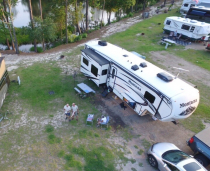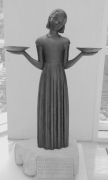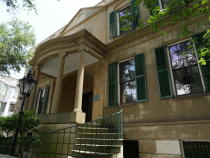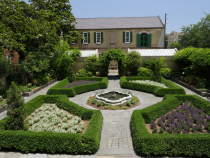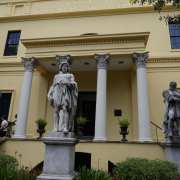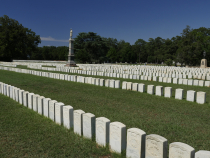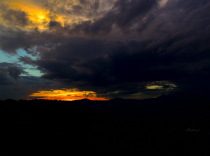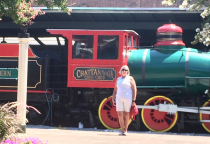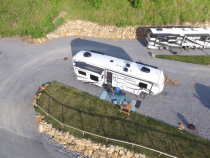The remainder of summer 2016 (3 months) was spent traveling the Southeast USA covering states of Georgia, South Carolina and North Carolina. A relatively small area, 375 miles if you drove straight through, but what would be the fun in that? We had 3 themes for this journey: Civil war history; water/beaches; and culture (concerts/theater).
We found a list (of course there was a list involved) of the 50 most preserved Civil War sights a with an interpretation center. The National Parks took over many, and they do a great job.
When President Lincoln was elected in November 1860, South Carolina succeeded from the Union declaring themselves a separate country. However, military forces, belonging to the Union were barracked at Ft. Sumter which South Carolina interpreted this as a foreign force within its territory, moreover, Union forces refused to surrender the fort. The confederate forces shot on the fort, destroying it in April 1861, this became the first shots of the Civil War!
Ft Pulaski was considered invincible. Its 7-1/2-foot solid brick walls were backed with massive piers of masonry. Confederate forces provisioned it with 6 months of supply, determined to protect the Savannah River. The North however, had a new weapon; the RIFLED bore cannon (vs the smooth bore). The rifled bore would provide extra spin and distance on the shell. Ft Pulaski lasted 48 hours.
From November 15 until December 21, 1864, Union General William T. Sherman led some 60,000 soldiers on a 285-mile march from Atlanta to Savannah, Georgia. The purpose of this “March to the Sea” was to frighten Georgia’s civilian population into abandoning the Confederate cause. Pre-Civil War Savannah was praised as the most picturesque and serene city in America. It was known for its grand oaks festooned with Spanish moss and its genteel citizenry. Upon entering Savannah, Sherman was said to be so impressed by its beauty that he could not destroy it. On December 22, 1864, he sent a famous telegram to President Abraham Lincoln, offering the city as a Christmas present.
We toured Andersonville Prison near Athens, GA, an iconic reminder of the horrors of Civil War prisons. It was overcrowded to four times its capacity, with an inadequate water supply, inadequate food rations, and unsanitary conditions. Of the approximately 45,000 Union prisoners held at Andersonville during the war, nearly 13,000 died. The photo with the headstones was taken at Andersonville. (POW conditions of the Civil war were so egregious, the National POW museum stands there today).
Chickamunga Battlefield in Tennessee was one of the bloodiest battles of the civil war. Veterans held reunions on the field, and petitioned Congress to create a park. The veterans returned to the battlefield and found their position when a specific event occurred. Today, the park has hundreds of monuments that show a regiment north and south positioned against each other and a placard chronicling what happened at that spot. The Military Park was conceived “not to honor one army, but both.” It is the first military park of its kind. Chickamunga is located near Chattanooga, we had a photo opportunity of the Chattanooga Choo Choo and a tour of a local Tennessee distillery.
Hilton Head Island had miles of beaches. Water and beaches were fantastic. We discovered the sand was hard enough to ride bikes on the beach! That’s cool. Hilton Head SC is just 20 miles from Savannah. Savannah itself with the squares (a 1/4 city block dedicated to green space) was the perfect reprieve from the summer heat. Did you know Savannah is the birthplace of Girl Scouts? Karen’s inner cadet came out visiting the Juliette Gordon Low house.
We camped next to state parks, lakes, beaches; water was everywhere, but we did not kayak. The tides from high to low were 15 feet! Every 12 hours or so 15 feet of water came rushing in or rushing out. One water trail had trees larger than our kayak floating by. We decided, our inflatables were good, but no match against water like that and the razor sharp oyster beds that covered the shoreline. So when life gives you oceans, we eat their seafood. Fish Boils were heaven. Oceans also give you aquariums and turtles, and other great ways to spend your days.
An anchor activity, planned months in advance was Charleston, SC. Our most enjoyment came from “cultural exploits”. The Spoletto Festival, in Charleston, SC starting Memorial Day weekend was the summer highlight. This festival has been going on for 40 years and is 18 days of dance, theatre, music, comedy and all things cultural. Literally, there were 30 or more cultural events every day. From seeing “The Importance of Being Ernest” to listening to the Westminster Choir to Comedy Clubs, to the singing of Amazing Grace in Charleston, SC the ground zero of the slave trade in the 1800’s. We had 14 date nights and each one was distinct from every other. In addition to theatre at night we went plantation viewing during the day. These grand old homes and their gardens were magnificent. We got to see our first magnolia tree in bloom! Summer concerts in parks, and along rivers, bicycling and meeting lovely people rounded out our summer. Jekyll Island, GA had the most beautiful bike trail I have ever been on, as it followed alongside the beach.
We are writing this blog post in Atlanta, GA, where we will store the RV and begin our next chapter which includes: Russia; Scandinavia countries; Germany; France; and Spain. We return to the US in mid November via a trans Atlantic cruise.
[wpgmza id=”1″]

